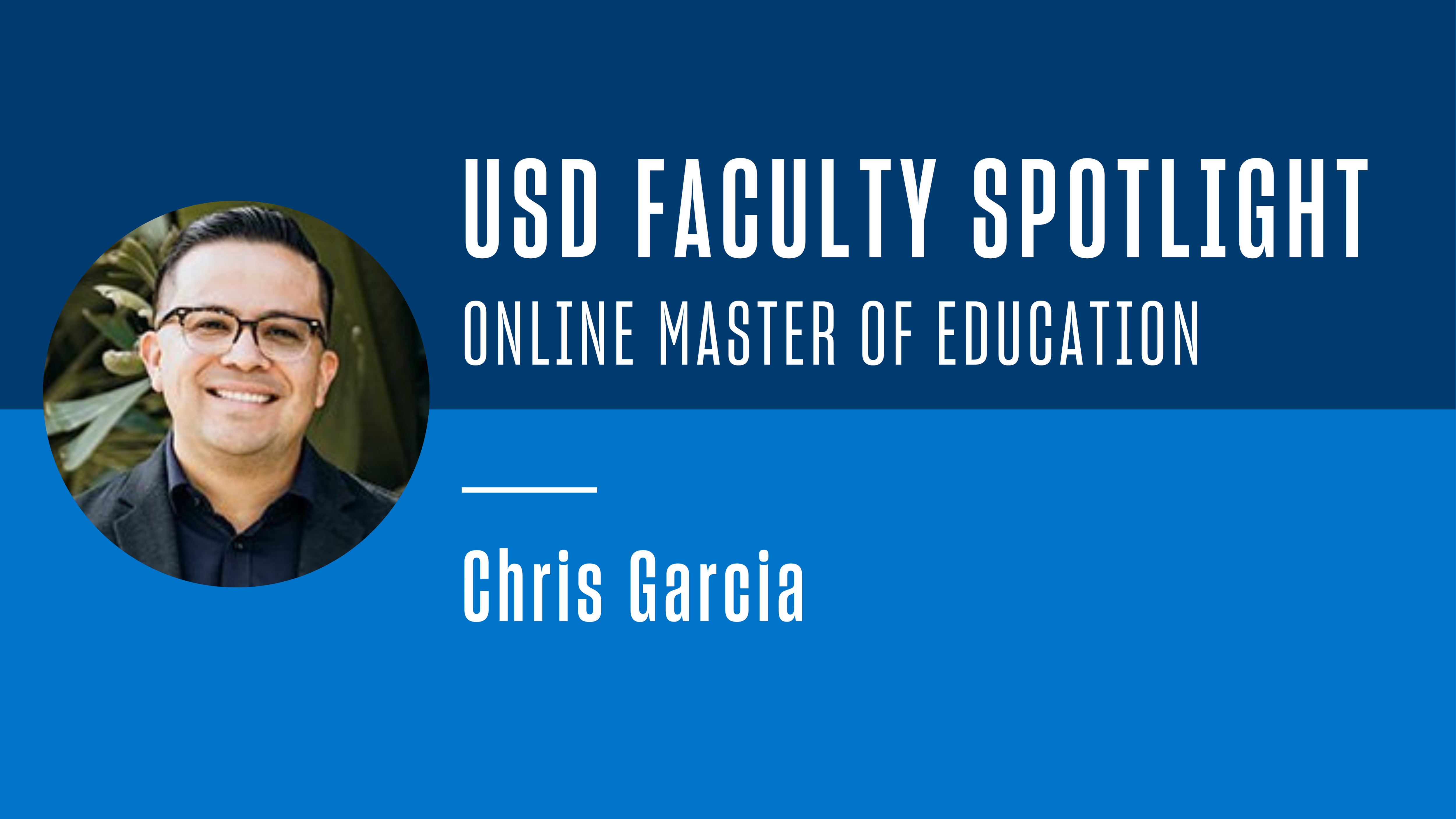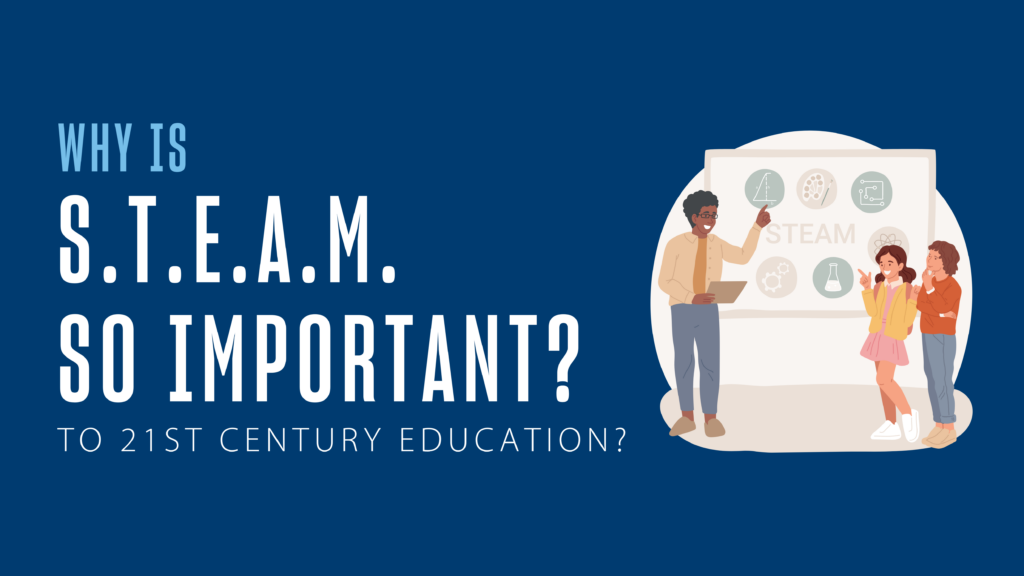After Earning His MEd from USD, He Now Teaches Kids — and MEdx Students
The journey to becoming a teacher is different for everyone. Chris Garcia seems like he was born for this.
A friendly bundle of energy who exudes positivity and enthusiasm, these days Chris splits his time between educating sixth-graders in Chula Vista, Calif., and teaching teachers through the University of San Diego.
So Mr. Garcia, what motivated you to become a sixth-grade teacher?
“Sixth and seventh grade were one of the most horrible educational experiences that I’ve had, growing up,” he laughs, remembering his own struggles during that “weird middle age of being a pre-teen.”
Things got better when his parents enrolled him in a private middle school and high school, where he began to notice how much effort, and even passion, the teachers poured into their work. By the end of high school, “I realized that I wanted to help people.”
That, plus his natural curiosity about “why people are the way they are,” led him to study sociology at the University of California, Davis. During that time, he worked in after-school programs, where he was told he had a natural ability to connect with students and parents and was encouraged to consider teaching.
“I kept reflecting on those sixth and seventh grade years. I thought: I want to be a sixth grade teacher; I want to be a seventh grade teacher — because I want to provide to those students the teacher that I wish I had.”
Next Stop: University of San Diego — and Kenya!
Enter, the University of San Diego online Master of Education program. Chris earned his master’s with a specialization in Curriculum and Instruction in 2013, and one of the experiences he had during his MEd studies led directly to his first teaching job.
OK, here’s where it gets even more interesting: That experience occurred in Kenya. Plus, the job he landed brought him back to the same school district where he struggled in sixth and seventh grade.
Long story short, the Chula Vista Elementary School District was looking to move toward cutting-edge technology education and 21st century skills and was opening a state-of-the-art new elementary school. Chris, a fresh MEd grad with only student teaching experience under his belt, was up against hundreds of applicants with far more experience.
So when the administrators asked what made him stand out among the competition, Chris told them about having just returned from an inspiring University of San Diego educational expedition to Nanyuki, Kenya. There, he worked with teachers and other USD graduate students to equip educators with iPads and engage them in how to use this mobile technology to enrich the lives of their students.
His story about teaching the Kenyan educators to pre-record lessons and lectures on the iPads (a “game-changer” for the teachers) and his interactions with the students there (so “serious and self-motivated”) won him a teaching job at the brand new Enrique S. Camarena Elementary School.
Real-Life Lessons from Computer Robotics
Chris is still working with the Chula Vista Elementary School District, now as a District STEAM Engineering Resource Teacher within its Innovation Department. The job involves seeing a different sixth-grade class every school day.
“I see a total of approximately 140 to 150 sixth-grade classes every single school year,” he says, well over 4,000 students per year. Each day is broken into two parts.
In the morning session, he engages students in reflecting on their “strengths, interests and values” and connecting those with potential careers “so that way the students can see their future selves,” he says. “Students who understand their strengths and their interests and their values at a young age are able to stay motivated as they move on through middle school and high school” with a clearer sense of what knowledge and experiences will help them “if I want to be that future doctor, if I want to be that future veterinarian, that future automotive technician, that future chef, that future photographer.”
After lunch, “We teach computer robotics. But we present to them ‘problem cards’ that have to do with wildfires, pollution, the environment, hunger, education — to see how computer robotics could have an influence in solving any one of those challenges,” he says.
“Not only do they get to learn about their strengths, interests and values, and see potential careers they may be connected with, they also learn computer robotics and computer coding at the same time. So I have to find a way to mesh all of that into four hours.”
Fortunately, it’s a labor of love. Why, it almost sounds as if he’s providing those students with the kind of teacher he wishes he had back in sixth grade. (Note: For a sneak peek into his teaching style, check out the YouTube video “Building a Robotic Arm with Mr. Garcia.”)
Back to USD, as a Professor
In 2016, Chris also began teaching at the University of San Diego, on campus as a technology educator and online through USD’s innovative Master of Education program.
Here, just as with his younger students, he is inspired by seeing their learning in action and sharing in that joy. He mentions the metaphor of the light bulb going off and says, “It’s remarkable to see that in a 12-year-old and a 22-, 25-, sometimes 30- or 40-year-old as well.” For example, when one of his MEd students says, “I just introduced my class to that app that we just talked about in class and they loved it!”
As a graduate student and now as an adjunct professor, one aspect of the University of San Diego MEd experience that he cherishes is how engaged and deeply invested the professors are.
For example, “I’m still being mentored and guided by my professors that I’ve had there from nine-plus years ago. To be able to continually communicate with them and also collaborate with them has just been remarkable, and I honestly cannot put a price tag on that — just the relationships that I’ve built,” he says. “So you’re not really entering a program, you’re actually entering an educational network, an educational family that has the same visions and goals.”
For more information on the University of San Diego’s online Master of Education program, we invite you to reach out through our contact page or visit our MEd degree page.




